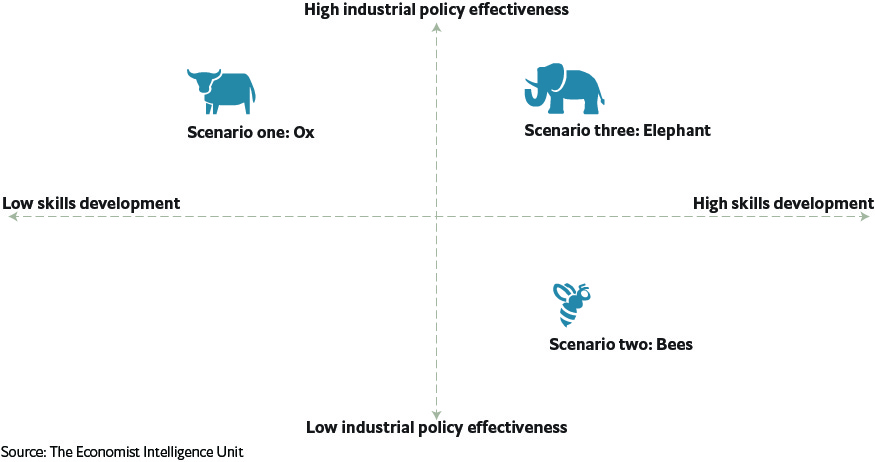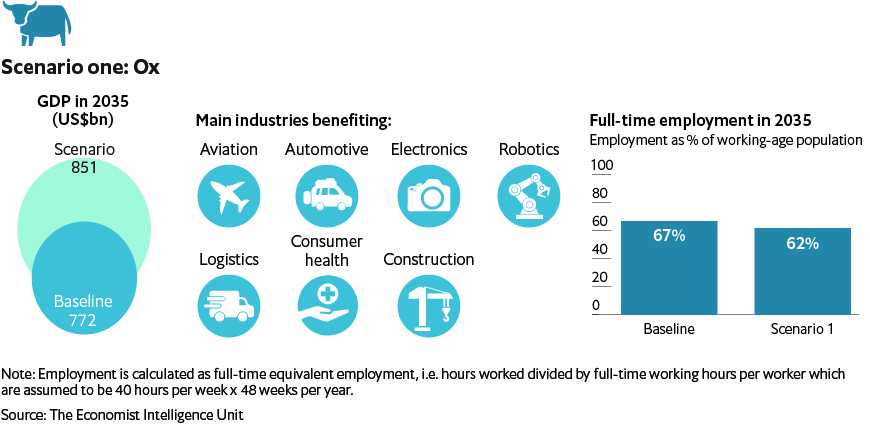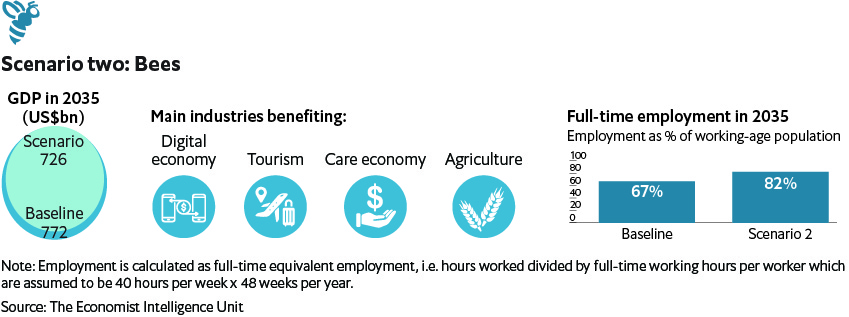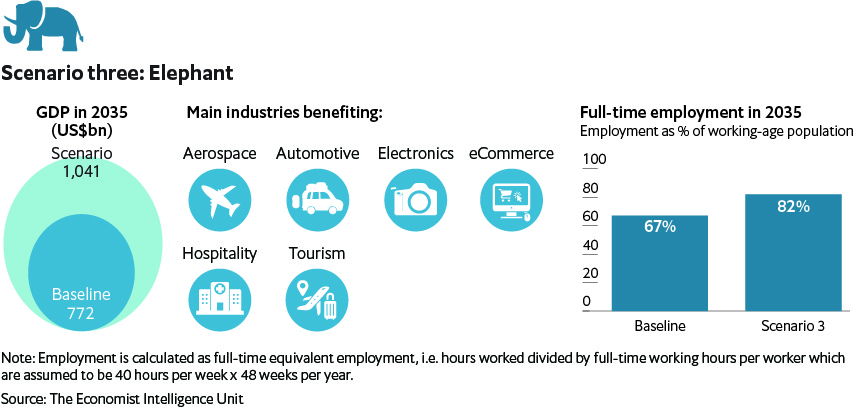To support Thai policymakers in navigating this transition, the Institute of Public Policy and Development commissioned The Economist Intelligence Unit to conduct a foresight exercise that investigates how AI could affect key social and economic metrics in Thailand across three scenarios. In each of these scenarios, we have assumed that AI technology will substantially increase the use of computers and raise productivity. We focused our analysis on two critical and uncertain factors: the effectiveness of industrial policy and the extent of skills development in an AI-augmented economy.

To better measure the magnitude of these impacts, we built an econometric model that forecasts four social and economic metrics to 2035: GDP growth, employment, productivity, and the relative importance of different sectors in the economy (industry, services and agriculture). We used qualitative analysis to build out our scenarios, considering the implications of AI and AI-assisted automation for specific sub-sectors of the economy, as well as wages, inequality, and social and political impacts.

Industrial policy succeeds, but there is limited focus on skills development
This scenario is labelled “Ox” to represent powerful industrial output and GDP growth. However, workers who are replaced by automation in this scenario lack the necessary agility to transition to new jobs due to insufficient re-skilling efforts. Strong industrial policy focuses on manufacturing in regional development zones, which supports Thailand’s competitiveness in industries such as aviation, electronics and medical technology. Underinvestment in education results in substantial job losses.

Failures in industrial policy undermine Thailand’s competitiveness, but there is a strong focus on skills development.
This scenario is labelled “Bees” to emphasise the policy focus on workers’ skills and industriousness, and the accompanying high employment level. However, overall output (GDP) in this scenario is low. Thailand’s digital services economy powers ahead and agriculture benefits from precision tools linked to AI, but manufacturing loses steam.

A strong focus on both industrial policy and skills development leads Thailand to reach its full potential.
This scenario is labelled “Elephant” (Thailand’s national animal) to represent superior and more equitably shared industrial and GDP growth, compared with the other scenarios. Balanced and sustained sectoral growth is enabled by broad adoption of AI and AI-linked automation across the aerospace, automotive and electronics industries, as well as smart investment that supports labour-market adaptability.
Policy implications
Although AI will have unpredictable impacts on Thailand’s labour markets, policymakers will need to embrace this global technology to avoid the country falling behind its peers. While the three scenarios present policymakers with different challenges, the solutions are surprisingly similar. Policy instruments can enable Thailand to take advantage of AI’s opportunities and manage its risks, allowing it to achieve optimal outcomes. We have identified three key areas where policymakers and the business community in Thailand can act now to gear up the country for a prosperous future.
Industrial policy
- Focus on promoting individuals’ employment prospects, rather than protecting specific jobs.
- Continue to pursue “old economy” industrial policies to boost Thailand’s competitiveness (e.g. through tax and regulatory reform, as well as infrastructure investment).
- Broaden “digital backbone” investment so that companies and individuals across the country can access the Internet and benefit from the latest digital technology.
Skills development
- Use carefully designed employment subsidies or company tax relief to encourage worker training and hiring in high-potential growth industries, such as tourism and healthcare.
- Pursue balanced investment in primary, secondary and tertiary education to support the entrepreneurial capacity of the next-generation labour force. This includes adapting curricula to align with 21st-century skills.
A digital public sector
- Make use of AI in government and public services, including using AI-based systems to perform rote administrative work. This can free up public servants to focus on more complex policy issues.
- Pursue AI-powered labour-market support to help workers cope with expected changes to their jobs, and to transition to new jobs in growing industries.
The full report—which includes in-depth analysis of the scenarios, an assessment of potential policy responses and details on our methodology—can be found here.




